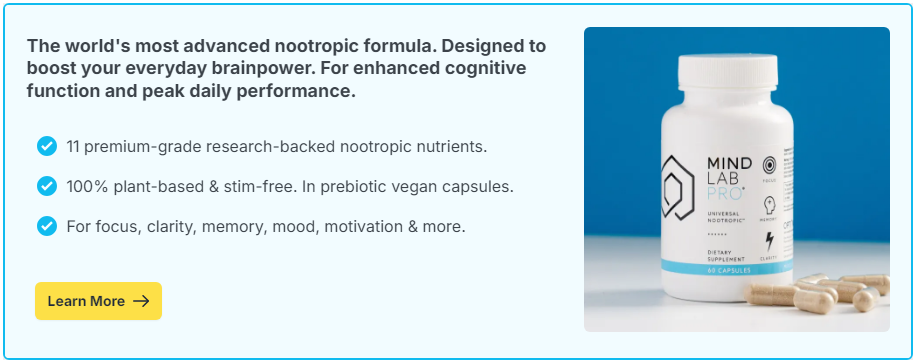
You walk into a room packed with handshakes, name tags, and the exact person you wanted to meet. Five intros later, your mental whiteboard looks like a cat walked across it. Remembering 100 names is not a party trick, it is a sequence of steps that reduce noise and add structure so names actually stick. This guide gives you a working system you can use tonight. It blends practical tactics, tiny scripts for awkward moments, and a list of ingredients some networkers keep in their kit for calm focus and cleaner recall. Bring a pen or a notes app, a smile that is real, and the intention to practice. The payoff is big, because names are the first bridge to relationships.
Contents
The 100 Name Problem, Why Names Slip and How to Stop It
Names are easy to lose because they are labels without meaning at first contact. Your brain loves stories and visuals. It struggles with arbitrary sounds in a noisy room. Add stress, music, and a plate in your hand, and the signal gets muddy. The fix is not a heroic memory. The fix is a repeatable process that turns a new label into something more meaningful in the first ten seconds, then reinforces it several times in the first ten minutes.
Think about working memory as a tiny inbox. It holds only a few items at once. When you meet two people back to back, the second name often pushes the first right out of the inbox. You can solve this with quick hooks that attach names to something sticky, then with prompts that buy you time. The more hooks, the better. Visual hooks, sound hooks, and spatial hooks work well in busy rooms because they use different channels, not just the verbal lane that is already crowded.
Context switches also break names. You are in a conversation, someone taps your shoulder, and now you are juggling threads. The cure is to close loops fast. When you can, finish the name encoding right away, then reopen the other thread. This is why repeating the name out loud feels magic. It is not magic, it is the out loud version of saving the file before you open a new window. Stress matters too. If your heart is racing, attention narrows and names slide. A breath that slows your exhale can widen your focus again. Two slow seconds in, four seconds out, repeat twice. This tiny pattern clears static so the next name lands clean.
Pre Event Prep, Priming Your Brain and Building Hooks
Preparation turns chaos into a plan. Start by scanning the attendee list if it is available. You are not trying to memorize, you are skimming for anchors. Group names into simple buckets, such as product, design, finance, media. Jot a few initials or short tags beside names you hope to meet. If a face sheet or LinkedIn scroll is possible, look at profile photos so your brain has a visual seed before the handshake. Seeds make the first ten seconds easier in the wild.
Give yourself a pocket card. On one side, write two prompts you will use for everyone. On the other side, write your follow up plan. The prompts might be what are you building this quarter and what problem should have a spotlight that it does not. The plan might be add to notes app tonight, send one help email tomorrow, schedule a coffee for three people next week. When choices are clear, your brain stops burning cycles on meta decisions and focuses on the person in front of you.
Shape your state before you step in. A small protein rich snack plus water prevents the classic crash that turns names into mush. Bright light in the venue helps, so stand near it when you can. Keep your dominant hand free by moving your bag or plate to the other side. That way the handshake is smooth and you are not wrestling props while trying to listen. If you use caffeine, keep it modest. Many people like pairing caffeine with L Theanine for a steady feel that avoids jitter. If mingling raises your stress, a slow exhale practice on the walk to the door can quiet the noise. Little moves like these keep your attention available for the task that matters, catching and storing names.
In the Moment Tactics, Name Capture That Sticks
Here is a field tested sequence you can run with every introduction. It looks simple because simple survives in a crowded room.
Step 1: Hear it right
- Ask for the name, then the spelling if it is uncommon. Spelling forces your brain to visualize letters, which deepens encoding.
- Use a quick check phrase, such as did I catch that right, Maya with a y. People enjoy the care, and you buy a repetition.
Step 2: Say it back
- Use the name in your first sentence, nice to meet you, Maya. That is one reinforcement, and it feels natural.
- If it suits the moment, attach a micro fact, Maya from the robotics team. Now the name has context.
Step 3: Build a hook
- Visual hook: link the name to a picture, Rose becomes a small rose pin in your mind, or Alex becomes a camera on a tripod if Alex is a videographer.
- Sound hook: rhyme or alliteration, Dan who likes data, Priya with product. Silly is fine. The brain remembers weird.
- Spatial hook: place the person on a mental map of the room, entry left by the tall plant, center near the demo table.
Step 4: Save it
- Glance at the name tag if present to confirm, then take a two second snapshot of the face plus your hook. This micro pause is the save button.
- As soon as there is a lull, jot a three word note in your phone, Maya robotics plant. Use a single running note for the night so you are not switching apps.
Step 5: Handle the wobble
- If you blank mid conversation, use an honest script, I want to make sure I have your name right. Would you say it once more. People appreciate the respect.
- If you forget later, reintroduce yourself and offer your name first, then pause. Most people return the favor. If not, add, remind me of your name so I can say hi properly next time.
Group settings add a twist. When you meet a circle of five, label the circle on your room map, then give the group a theme name, security crew by the window. As you speak with each person, add their first name to that group label, then move on. Linking individuals to a shared anchor reduces interference and keeps your notes tidy.
Nootropic Supports That Complement Practice
Practice carries the load, yet some people like a small toolkit for steadier focus, smoother social energy, or easier recall. The ingredients below are well known in the cognitive support world and often appear together in comprehensive formulas. Use them thoughtfully, start low, and check with a professional if you take medications or have a condition.
Calm, Steady Attention
- L Theanine: commonly paired with caffeine for a composed focus during mingling and follow up writing. Many people say it takes the sharp edge off stimulants without making them dull.
- Phosphatidylserine, PS: often included for attention and composure when conversations stack. Because it is not stimulating, some place it late afternoon before an evening event.
Encoding and Mental Energy
- Citicoline: chosen by some for clear mental energy during detail heavy tasks like scanning badges, typing notes, and writing tailored follow ups. It fits early, before the event begins.
- Maritime Pine Bark Extract: valued for circulation and antioxidant support. Some networkers feel a fresher signal during long sessions on their feet.
Stress Windows
- L Tyrosine: a precursor for dopamine and norepinephrine. People sometimes use it when social load is high so decision making stays steady.
- Rhodiola Rosea: often used for fatigue resistance during repetitive introductions. If it feels energizing to you, place it earlier in the day.
Longer Horizon Memory
- Bacopa Monnieri: a daily ingredient many use over weeks for learning and recall. It supports the background skill of remembering names across events, not just one night.
- Lion’s Mane Mushroom: widely used for general cognitive support. People describe a clear, even feel that suits creative conversation and later writing.
Pick one or two roles to fill, not eight at once. For example, one calm focus option plus one longer horizon option. Keep notes on timing and how you felt in the room. Your future self will thank you when the next event pops onto the calendar.
After Event Consolidation, Turn Encounters into Recall
The night is over, but memory is just getting started. Consolidation is the bridge between a pleasant chat and a useful relationship. Aim to complete three actions within 24 hours so the names you worked to capture become part of your long term set.
Action 1: Clean your notes
- Open the single running note from the event and turn fragments into short lines, name, hook, context, next action. For example, Maya, robotics plant, pilot in October, intro to Sam.
- Tag each line with a simple category, product, design, investor, press. Categories help you find people later when a relevant opportunity appears.
Action 2: Spaced recall
- Run a quick look back at 10 minutes, at 1 hour, and before bed. The reviews can be 60 seconds each. The point is to touch the names three times so the brain flags them as important.
- Repeat a short pass tomorrow and again in three days. Use an index card or flashcard app if that fits your style.
Action 3: Useful follow up
- Send at least one helpful note that does not ask for anything. A quick link to a tool they mentioned needing, an intro they would value, or a thank you for a specific insight they shared.
- For others, a short connection note works, Thank you for the chat near the demo table, Maya. If the pilot timing holds, I will send that sample deck by Friday.
Sleep is the quiet powerhouse here. Protect it the first night after an event so memories consolidate. Keep screens dim, keep caffeine out, and give yourself a predictable wind down. In the morning, sunlight on your eyes and a ten minute walk anchor the day. If you are using longer horizon supports like Bacopa or Lion’s Mane, daytime is a common window so benefits accumulate between events.

